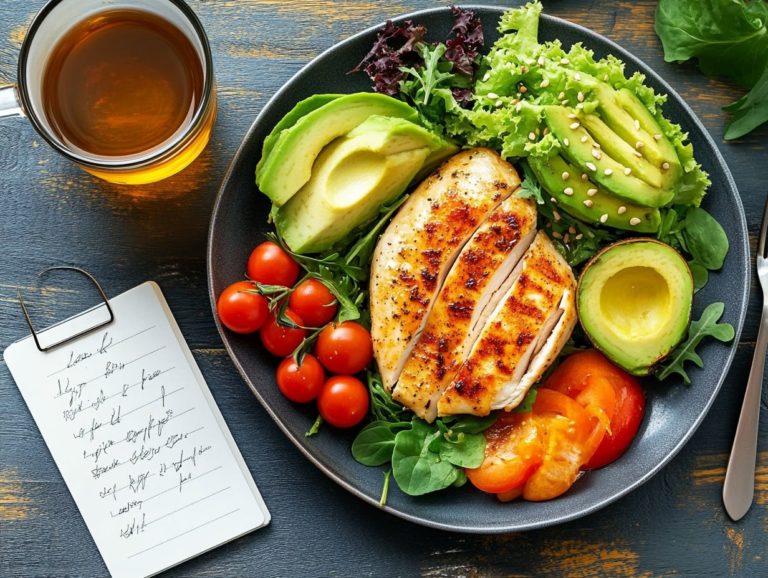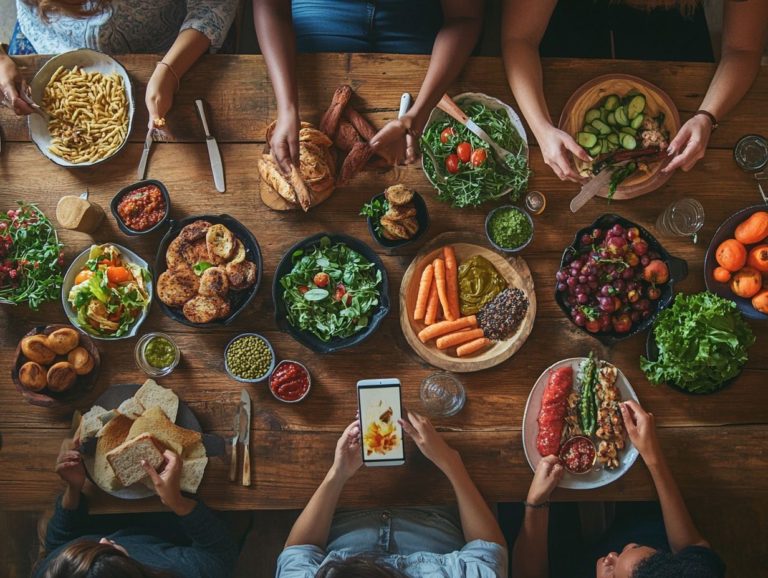How to Manage Keto Pantry: Common Questions
The Keto diet has surged in popularity, emerging as a potent strategy for weight loss and enhancing overall health, with an emphasis on high-fat and low-carb foods. This essential Keto approach can significantly transform your dietary outcomes.
However, navigating this lifestyle can prove challenging without the proper guidance from a keto dietitian.
This article delves into everything you need to manage your Keto pantry effectively, offering insights on which foods to stock, how to decode nutrition labels, and tips for seamless meal planning. From pantry essentials to keto-friendly snacks, we’ve got all your bases covered.
It also tackles common pitfalls and presents motivating strategies to keep you on course.
Get ready to simplify your Keto journey and enjoy delicious meals with these must-have ingredients and pantry stocking tips!
Contents
- Key Takeaways:
- What is the Keto Diet?
- What Foods are Allowed on the Keto Diet?
- How to Read Nutrition Labels for Keto?
- What Nutrients Should be Prioritized on a Keto Diet?
Key Takeaways:
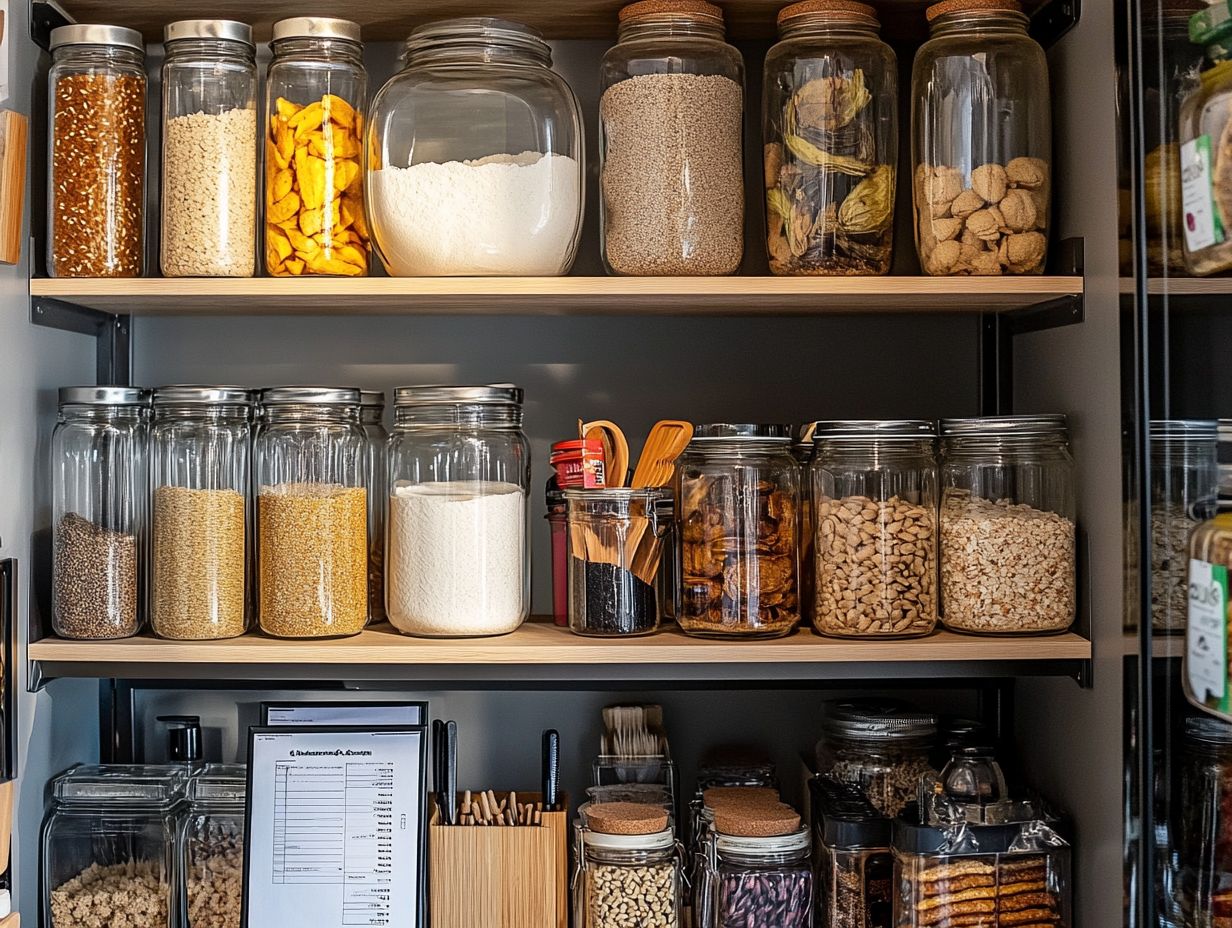
- Stock a keto pantry with essential ingredients, keto-friendly snacks, and shelf-stable items.
- Prioritize limiting carbohydrates and focusing on healthy fats and proteins when reading nutrition labels for a keto diet, especially when grocery shopping.
- Avoid common mistakes, plan meals, and stay motivated while on a keto diet with our pantry guide and cooking tips.
What is the Keto Diet?
The Keto diet, renowned for its low carbohydrate focus, emphasizes a high intake of fats while minimizing carbs. This dietary approach effectively transitions your body to burn fat for energy instead of carbohydrates.
This approach has garnered considerable attention, thanks to its potential benefits, including weight loss, increased energy levels, and improved fat-burning capabilities. For those seeking healthy fat sources and strategic meal planning options, Keto has emerged as a compelling choice.
What Foods are Allowed on the Keto Diet?
On the Keto diet, you ll want to focus on high-fat, low-carb options. Foods like avocados, nuts, seeds, and select cuts of meat provide excellent protein sources to help you achieve your nutritional goals. Consider adding fresh produce, such as spinach and zucchini, to elevate your nutrient intake.
Incorporating healthy oils such as olive oil and coconut oil is essential. They not only boost your dietary fat intake but also add a delightful variety of flavors to your meals. Cooking oils like these are pantry essentials for any keto kitchen.
Don t forget about leafy greens like spinach and kale; they elevate nutrient density without significantly increasing your carb counts. Frozen veggies are a convenient and nutritious option for your keto pantry.
Full-fat dairy products, especially cheese and heavy cream, are perfect allies in this eating plan. They bring richness and versatility to your cooking, making every dish a treat.
By stocking a well-curated keto pantry with these key ingredients, including essential keto snacks, you’ll find it much easier to whip up delicious meals that truly support a healthy lifestyle.
Start your Keto journey today and transform your pantry into a haven of healthy choices!
What Foods are Not Allowed on the Keto Diet?
On the Keto diet, you ll want to steer clear of high-carb foods like grains, sugars, and starchy vegetables. These foods can disrupt your body’s ability to enter and maintain ketosis. It becomes essential to navigate the grocery store with purpose, ensuring your pantry is stocked with keto-friendly alternatives. This is where keto dieting and proper pantry stocking come into play.
To uphold the delicate balance of nutrients necessary for ketosis, you should avoid foods such as bread, pasta, rice, and sweet potatoes. These complex carbohydrates can throw a wrench in the metabolic state you re aiming for in your ketogenic lifestyle. Processed snacks, high-sugar fruits like bananas and grapes, and sugary condiments are particularly harmful to your low-carb intake.
As you sift through your pantry, consider replacing these items with low-carb options like these keto treats:
- Cauliflower rice
- Zucchini noodles
- Almond flour
Making these swaps can revolutionize your diet! You’ll feel amazing as you embrace a healthier lifestyle by focusing on healthy fats, lean proteins, and non-starchy vegetables. These choices support ketosis and provide a satisfying, nutrient-rich diet. Shelf-stable items and emergency stock can be particularly helpful during self-isolation or quarantine periods.
How to Stock a Keto Pantry?
Stocking a Keto pantry is crucial for anyone dedicated to the Keto diet. This thoughtful approach guarantees that all essential ingredients are at your fingertips, making meal planning and preparation seamless.
It involves a careful selection of shelf-stable items, high-quality protein sources, and healthy fats that align with your low-carb dietary principles. This not only provides structure for your meal choices but also allows for the spontaneity of creating meals on the fly or having an emergency stockpile during unexpected self-isolation or quarantine periods.
What are the Essential Ingredients for a Keto Pantry?
To create a well-stocked Keto pantry, you ll want to include essential ingredients that elevate your culinary experience. Healthy fats like olive oil, coconut oil, and avocado oil should be at the forefront, alongside a range of protein sources such as chicken, ground turkey, and eggs.
These staples are key to maintaining a balanced, keto-friendly diet while simplifying your meal prep. Alongside these foundational items, having a selection of low-carb vegetables think broccoli, spinach, and cauliflower is crucial. These veggies pack in fiber and essential vitamins, enriching your meals.
Frozen vegetables are particularly advantageous; they retain their nutrients and can be easily saut ed or steamed, making for a convenient side dish that complements your Keto lifestyle. Don’t forget pantry essentials like almond flour, chia seeds, and flaxseeds.
These ingredients serve as excellent substitutes in your baking endeavors or for thickening sauces, allowing you to unleash your creativity without straying from your dietary goals. Consider adding canned goods and cooking oils to your pantry for more versatile meal ideas.
Together, these elements enhance the variety in your culinary repertoire and ensure that your meals are nutritious, satisfying, and perfectly in line with ketogenic standards. Don’t miss out on the convenience of grocery pickup and home delivery! Services like Amazon and Thrive Market make it easy to stock your keto pantry without leaving home.
Top Keto Snacks to Stock Your Pantry!
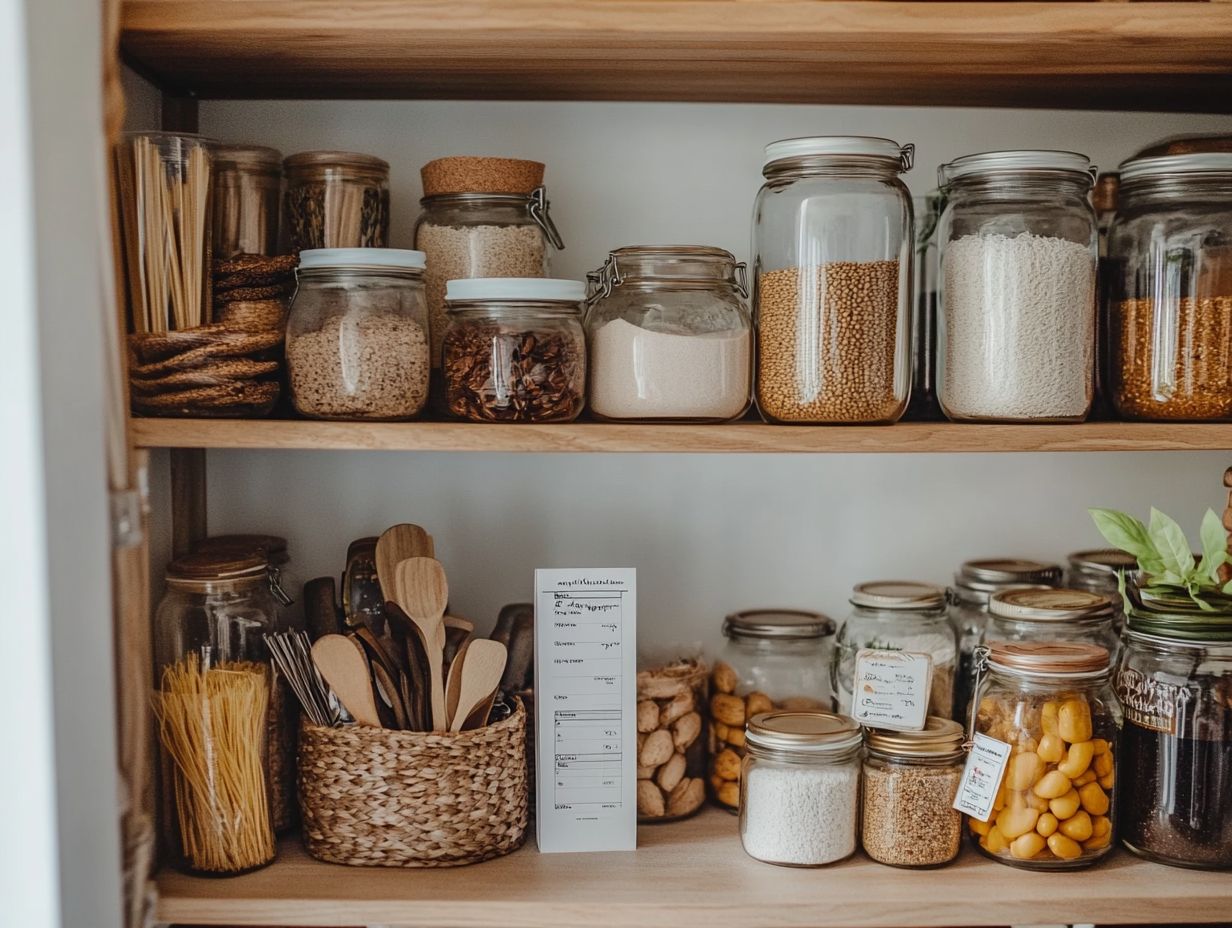
Stock your pantry with some delicious keto-friendly snacks like cheese crisps, beef jerky, and sugar-free treats. These options not only align perfectly with your Keto diet but also provide convenient choices to resist unhealthy temptations during moments of hunger.
Keto treats like these can be lifesavers during travel bans or unexpected self-isolation. These pantry staples also satisfy cravings!
Take cheese crisps, for example. They re packed with protein and calcium, making them an excellent choice for maintaining your energy levels. Beef jerky is another fantastic option that delivers a hearty dose of protein while keeping you feeling full for longer. For those looking for dairy alternatives, try options like almond-based cheese crisps.
And let s not forget about sugar-free treats! Often made with natural sweeteners, they can indulge your sweet tooth while keeping your carb count low. By incorporating these snacks into your keto regimen, you can enhance your experience, making the journey toward your goals feel enjoyable and liberating rather than restrictive. Consider adding healthy cooking tips to your routine to make the most out of these keto-friendly options.
How to Read Nutrition Labels for Keto?
Understanding how to read nutrition labels is essential for anyone following the Keto diet. This knowledge enables you to quickly identify which products are keto-friendly by focusing on net carbs (the total carbohydrates minus fiber), fiber content, and the presence of healthy fats.
With this skill in your toolkit, you can make smarter choices at the grocery store and streamline your meal planning effectively. Understanding the nutrition essentials can also help you select the right staples for your pantry.
What Nutrients Should be Limited on a Keto Diet?
On a Keto diet, it s important for you to limit certain nutrients, particularly sugars and high-carb foods. These can thwart your body s ability to achieve and maintain ketosis, which can ultimately derail your weight loss and fat-burning ambitions.
To truly optimize your low carbohydrate lifestyle, you must be vigilant about the foods that are infamous for their carbohydrate content, such as bread, pasta, rice, and those tempting sugary snacks. These carbohydrates convert swiftly into glucose, which your body opts for as energy rather than tapping into its fat stores.
For better weight management, focus on essential keto substitutions and pantry essentials. Starchy vegetables like potatoes and corn should also be on your avoid list, as they can raise insulin levels and obstruct ketosis.
Instead, direct your focus toward healthy fats, leafy greens, and low-sugar fruits like berries. These choices will not only nourish you but also promote sustained energy and support the metabolic processes vital for achieving successful weight management. Including immunity-boosting foods like elderberries and vitamin C-rich produce can further enhance your health.
What Nutrients Should be Prioritized on a Keto Diet?
When you embark on a Keto diet, prioritizing nutrients like healthy fats, high-quality protein sources, and low-carb vegetables is essential. These elements are important for keeping your energy levels, supporting muscle health, and ensuring a well-rounded nutritional profile. Adding fresh produce like spinach and zucchini to your meals can be particularly beneficial.
By incorporating these nutrient-dense foods, you can unlock the numerous benefits of this dietary approach, including weight loss and enhanced cognitive function. Healthy fats think avocados and olive oil are crucial for providing sustained energy. Protein sources like grass-fed meats and eggs play a vital role in muscle repair and growth. Low-carb vegetables, such as leafy greens and broccoli, not only deliver essential vitamins and minerals but also offer fiber to support digestion.
Incorporating these foods into your meal-prepping routine can streamline your keto diet and enhance your overall experience. Meal prepping makes it easier to include these nutritional essentials in your daily meals, ultimately making your adherence to a Keto lifestyle smoother and more enjoyable. This practice guarantees you always have essential ingredients for healthy cooking at home.
How to Avoid Common Mistakes on a Keto Diet?
To navigate the Keto diet successfully and sidestep common missteps, you should prioritize meticulous meal planning and clearly understand your macronutrient ratios. Properly stocking your Keto Pantry with pantry essentials will help you maintain consistency and avoid non-keto options.
These elements are essential in steering clear of pitfalls that could hinder your journey toward effective weight management and enhanced overall health.
What are Some Common Keto Diet Mistakes to Avoid?
Avoiding common pitfalls in the Keto diet is crucial for your success. Underestimating your carb intake, neglecting vegetable consumption, and failing to track macronutrients can all impede your progress toward weight loss and overall health goals.
These missteps can easily derail your efforts. If you consume more carbs than you intended, you risk kicking your body out of ketosis (a metabolic state where your body burns fat for fuel instead of carbohydrates), which significantly reduces fat-burning efficiency.
Not eating a variety of non-starchy vegetables can lead to nutrient deficiencies, compromising your overall well-being and energy levels. Furthermore, not tracking your macronutrients makes it hard to understand your specific dietary needs, complicating your ability to tailor meals effectively.
To sidestep these issues, meticulous meal prepping is essential. This allows you to plan balanced, low-carb meals while ensuring you get enough vegetables. Utilizing tools like food diaries or apps can also be invaluable in monitoring your macros, keeping your Keto journey on the right track. Keeping shelf-stable items in stock is also beneficial to support your diet even during extended periods like self-isolation.
How to Overcome Keto Flu?
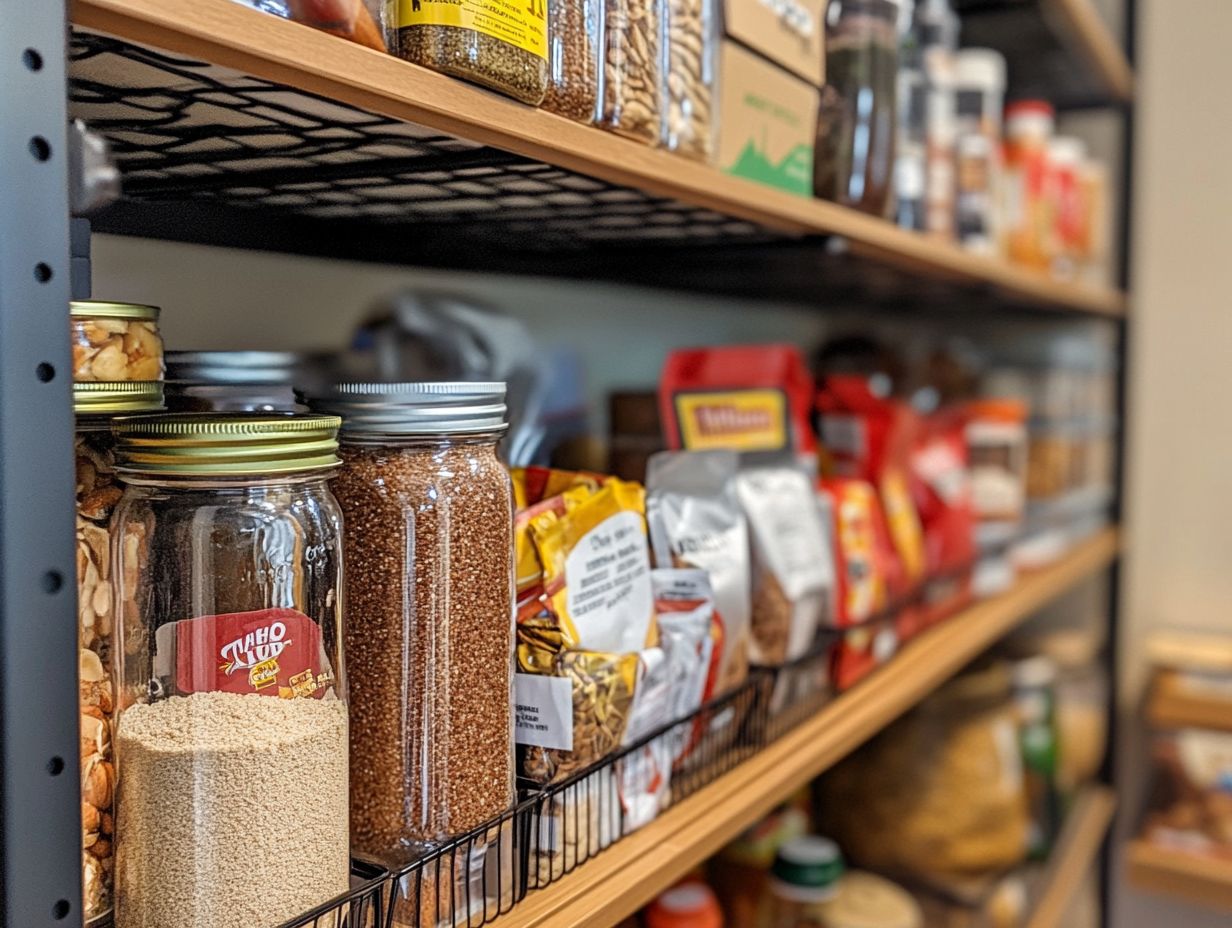
Overcoming Keto flu, that pesky set of symptoms that often accompanies the initial phase of the Keto diet, requires a thoughtful approach. To ease the transition and support your weight loss goals, focus on proper hydration, replenishing electrolytes, and incorporating healthy fats into your meals.
Effectively tackling these symptoms means prioritizing meal planning, which can greatly simplify the adjustment period. By preparing your meals in advance, you can ensure a balanced intake of nutrients, including the healthy fats essential for sustaining energy and promoting satiety.
Staying well-hydrated not only alleviates discomfort but is also crucial for maintaining overall bodily functions. Incorporating electrolyte-rich foods like avocados, nuts, and leafy greens can significantly enhance your recovery from Keto flu, making your weight loss journey more manageable and sustainable.
Supplementing with magnesium and vitamin C can further bolster your immune system and overall health.
Ready to start your Keto journey? Begin today and explore the exciting world of low-carb eating!
How to Meal Plan for a Keto Diet?
Meal planning is key! It s your gateway to enjoying delicious flavors while staying on track with a balanced nutrient approach. This thoughtful process involves selecting suitable recipes, sourcing keto-friendly ingredients during your grocery trips, and preparing meals at home that align seamlessly with your nutritional objectives. Make sure to use low-carb and sugar-free ingredients to stay within your dietary goals.
What are Some Easy Keto Meal Ideas?
Ready to spice up your meal prep? Here are some easy and tasty Keto meal ideas! Consider dishes like zucchini noodles with ground turkey, refreshing avocado salads, and perfectly baked salmon. These options provide healthy fats and protein while keeping your carbohydrate intake low, making your keto journey both enjoyable and sustainable.
If you’re eager to elevate your culinary skills, try whipping up a creamy cauliflower mash to accompany grilled chicken. It serves as a satisfying side. For breakfast, indulge in chaffles those delightful cheese and egg waffles that are sure to please.
Add healthy fats like olives to your tuna salad. This not only enhances flavor but helps you feel fuller for longer. With these enticing keto recipes, maintaining your weight loss goals or simply savoring the joys of home cooking becomes easy, all without the stress of complicated meal prep. Incorporating dairy alternatives can also provide variety and support those who are lactose intolerant.
How to Incorporate Variety in a Keto Diet?
Incorporating variety into your Keto diet is essential for keeping things interesting. You can achieve this by experimenting with different protein sources, exploring various cooking methods, and including a wide range of low-carb vegetables in your meal planning.
For instance, adding seafood like salmon and shrimp not only enhances flavor but also brings valuable omega-3 fatty acids into the mix. Embracing global cuisines can elevate your routine meals; why not try Mexican dishes with cauliflower rice or indulge in Thai curries using coconut milk for a rich, satisfying experience?
Meal prep techniques, such as batching protein-rich snacks or preparing jar salads overflowing with greens, can streamline your week while ensuring delightful variety. Explore local grocery stores for seasonal vegetables or specialty ingredients. This can spark your creativity and keep your meals appealing, making your low-carb journey both exciting and delicious. Stocking up on frozen veggies can also provide convenience and nutrient-rich options when fresh produce is less accessible.
How to Stay Motivated on a Keto Diet?
Staying motivated on a Keto diet can present its challenges. To navigate this journey successfully, consider implementing effective strategies.
Setting achievable goals can provide a clear path forward. Joining support groups can offer invaluable encouragement and camaraderie. Regularly tracking your weight loss progress allows you to celebrate milestones along the way, helping to maintain your enthusiasm and commitment to the diet. Utilize apps or journals to log your achievements and make necessary adjustments to your meal planning.
What are Some Tips for Staying Motivated on a Keto Diet?
To stay motivated on your Keto journey, regularly review your progress, celebrate those small victories, and engage with support groups that align with your dietary goals and experiences. These communities can offer invaluable encouragement and inspiration along the way.
Incorporating a daily or weekly tracking system can be immensely helpful. This allows you to visualize how far you’ve come and make necessary adjustments to your meal planning. By using apps or journals, you can log not only your weight changes but also how specific meals affect your energy levels and overall well-being. Keep an eye on your protein sources and ensure you have staple foods in your pantry to make this process more effective.
Setting realistic milestones, such as reaching a certain number of days on the diet or experimenting with new Keto recipes, will keep your motivation soaring. Joining online communities or local meetups centered around the Keto lifestyle fosters a sense of connection, where sharing both successes and challenges can significantly enhance your motivation an essential ingredient in maintaining your commitment to dietary changes.
How to Handle Social Situations on a Keto Diet?
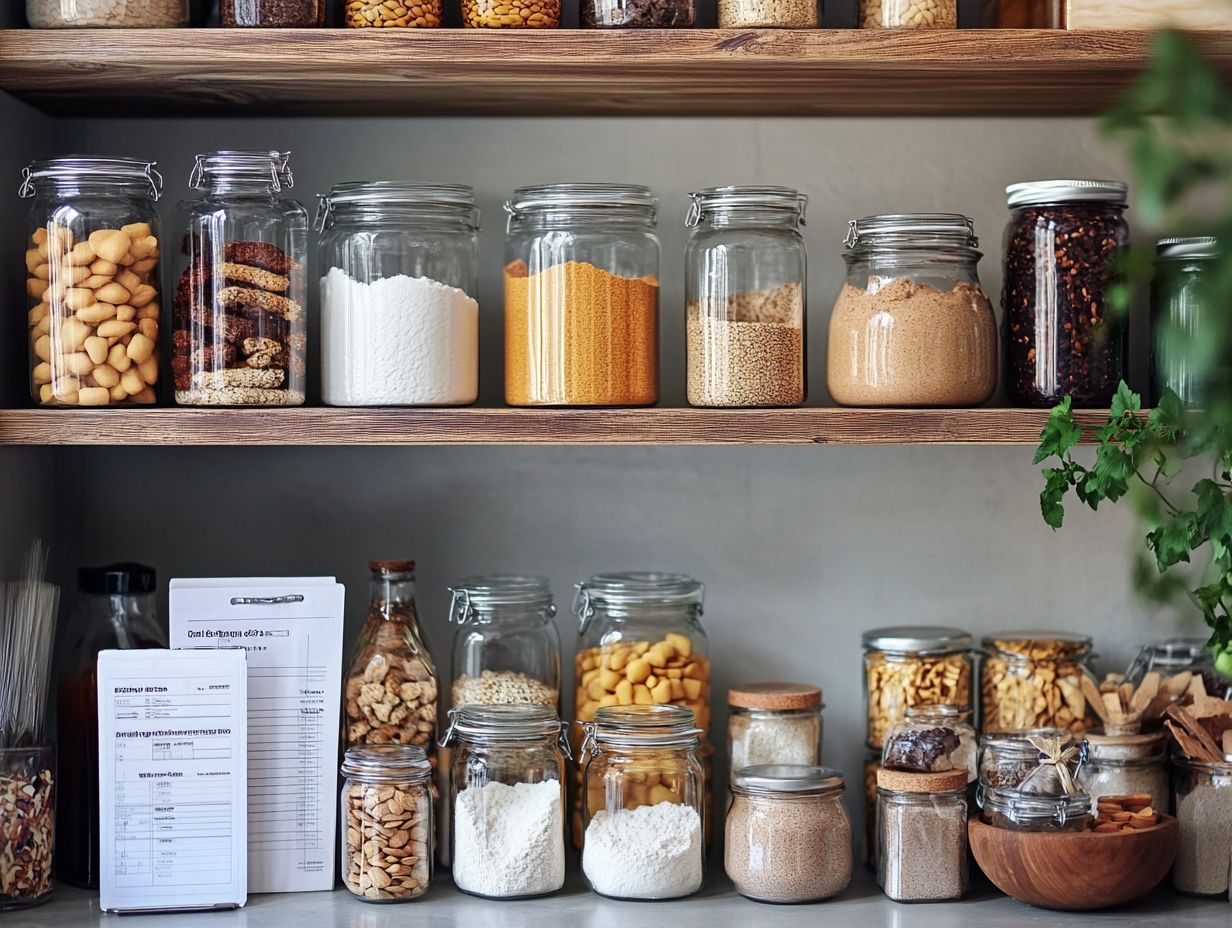
Handling social situations while on a keto diet can pose a challenge. However, with a little foresight, you can turn potential hurdles into seamless experiences.
Start by researching foods that fit a keto diet ahead of time. Don t hesitate to offer to bring a dish that meets your dietary needs, allowing you to navigate dining out or gatherings with ease.
This approach helps maintain your keto diet without feeling left out. One effective strategy is to scout the restaurant menu before your visit.
This pre-planning allows you to select meal options that align with your keto lifestyle. If you re heading to an event, consider suggesting a venue that offers a variety of meal choices.
Another option is to prepare and share a delicious keto-friendly dish with your friends and family. Be open about your dietary choices; most people are understanding and supportive when they see your commitment to your health goals.
By utilizing these techniques, you can fully engage in social interactions without feeling deprived or losing sight of your keto journey. Using grocery pickup or home delivery for keto-friendly ingredients saves time and effort, especially during busy times or unforeseen situations like a travel ban.
Frequently Asked Questions
What is a keto pantry?
A keto pantry is a collection of food items suitable for a ketogenic diet. This includes low-carb, high-fat options such as nuts, seeds, oils, and non-starchy vegetables.
Keeping emergency stock like canned goods and frozen veggies ensures you always have keto-friendly options available.
Why is it important to manage a keto pantry?
Managing a keto pantry is crucial to ensure you have the necessary ingredients for your ketogenic meals. This helps maintain consistency and makes it easier to stick to a keto diet.
Ensure you stock items like healthy oils, sugar-free sweeteners, and protein sources to cover all your nutritional essentials.
How often should I check and restock my keto pantry?
It is recommended to check and restock your keto pantry every 1-2 weeks. This routine helps ensure you always have fresh ingredients and avoid running out of necessary items.
What are some essential items to have in a keto pantry?
Some essential items for a keto pantry include healthy fats like avocado oil and coconut oil, low-carb flours such as almond and coconut flour, and sugar substitutes like stevia or erythritol. Don’t forget to add cooking oils like olive oil and pantry stocking items like Moringa tea or sugar-free multivitamins.
Can I still have snacks in my keto pantry?
Yes, there are many keto-friendly snacks you can include in your pantry, such as nuts, dark chocolate, and pork rinds. Just be sure to check the nutrition labels for carb counts and stick to appropriate portion sizes.
Adding keto treats like cocoa powder can also be beneficial.
Are there any tips for organizing a keto pantry?
One tip for organizing a keto pantry is to group similar items together, such as all cooking oils in one section and all nuts in another. You can also label containers and keep a running list of pantry essentials that need to be restocked.
Essential keto items include healthy fats, keto snacks, and protein sources like chicken and salmon. Don’t forget to stock your pantry with frozen veggies and low-carb items.
Consider adding shelf-stable foods and emergency stock for self-isolation or quarantine.



